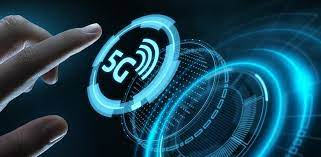Revolutionizing Connectivity: Unveiling the Power of 5G Technology
Introduction
The rapid advancement of technology
has led to a new era of connectivity with the introduction of 5G. As the fifth
generation of wireless technology, 5G promises to revolutionize the way we
live, work, and interact with the digital world. In this blog, we will delve
into the transformative potential of 5G, explore its key features and benefits,
and discuss the impact it will have on various industries and everyday life.
Understanding 5G
Technology
1.
Enhanced Speed and Capacity:
5G offers significantly faster data transfer speeds than its predecessors, with
download speeds reaching up to 10 gigabits per second (Gbps). This enables
seamless streaming, faster downloads, and virtually eliminates lag in real-time
applications.
2.
Lower Latency:
Latency refers to the time it takes for data to travel from its source to its
destination. 5G technology boasts ultra-low latency, reducing delays to as
little as one millisecond. This enables near-instantaneous response times,
critical for applications like autonomous vehicles, remote surgery, and virtual
reality experiences.
3.
Massive Device Connectivity: One
of the defining features of 5G is its ability to support a massive number of
connected devices simultaneously. This enhanced capacity is crucial for the
Internet of Things (IoT), where billions of devices, sensors, and machines can
seamlessly communicate and exchange data in real-time.
Benefits of 5G
Technology
1.
Enhanced Mobile Experiences: With
5G, users can enjoy faster download and upload speeds, high-quality video
streaming, and a seamless mobile browsing experience. Buffering and lag become
a thing of the past, opening up possibilities for immersive augmented reality
(AR) and virtual reality (VR) applications.
2.
Empowering Industry 4.0:
The industrial sector stands to benefit greatly from 5G technology. The low
latency and high bandwidth enable real-time monitoring, efficient automation,
and seamless communication in manufacturing, logistics, and smart cities.
Industries can leverage the power of 5G to optimize operations, increase
productivity, and unlock new business opportunities.
3.
Healthcare and Remote Medicine:
5G enables advanced telemedicine applications, facilitating remote
consultations, real-time diagnostics, and remote surgeries. The high bandwidth
and low latency ensure that medical professionals can provide efficient and
timely care, regardless of geographical barriers.
4.
Smart Cities and IoT:
5G technology plays a crucial role in creating smart cities. With its ability
to connect a vast number of devices and sensors, cities can optimize energy
consumption, improve transportation systems, enhance public safety, and enable
efficient resource management.
5.
Revolutionizing Communication:
5G opens up new possibilities for communication technologies. From
ultra-high-definition video conferencing and immersive virtual meetings to
enhanced connectivity for remote workers and IoT-based communication solutions,
5G enables seamless and efficient communication across various platforms.
Challenges and Future
Implications
While 5G offers immense potential,
its implementation comes with challenges. Infrastructure deployment, network
security, and compatibility with existing devices and networks require careful
consideration. Additionally, regulatory frameworks and spectrum allocation play
a vital role in ensuring the successful rollout and adoption of 5G technology.
Conclusion
5G technology is poised to
revolutionize the way we connect, communicate, and experience the digital
world. With its lightning-fast speeds, low latency, and capacity to connect
billions of devices, 5G will reshape industries, enable innovative
applications, and fuel the growth of the digital economy. As we embark on this
transformative journey, it is crucial to address the challenges and work
collaboratively to harness the full potential of 5G, unlocking new
possibilities and shaping a more connected and technologically advanced future.





Comments
Post a Comment